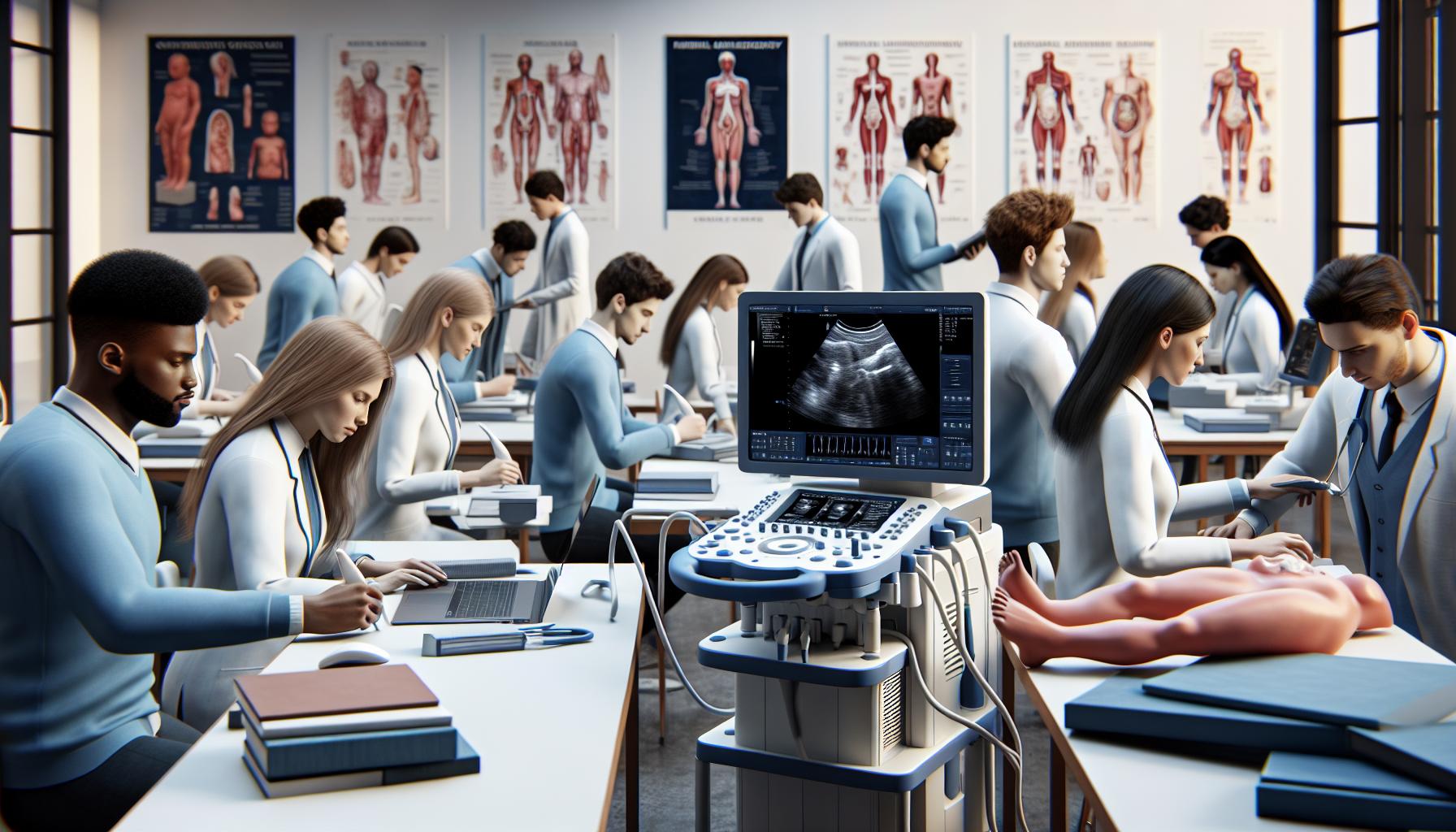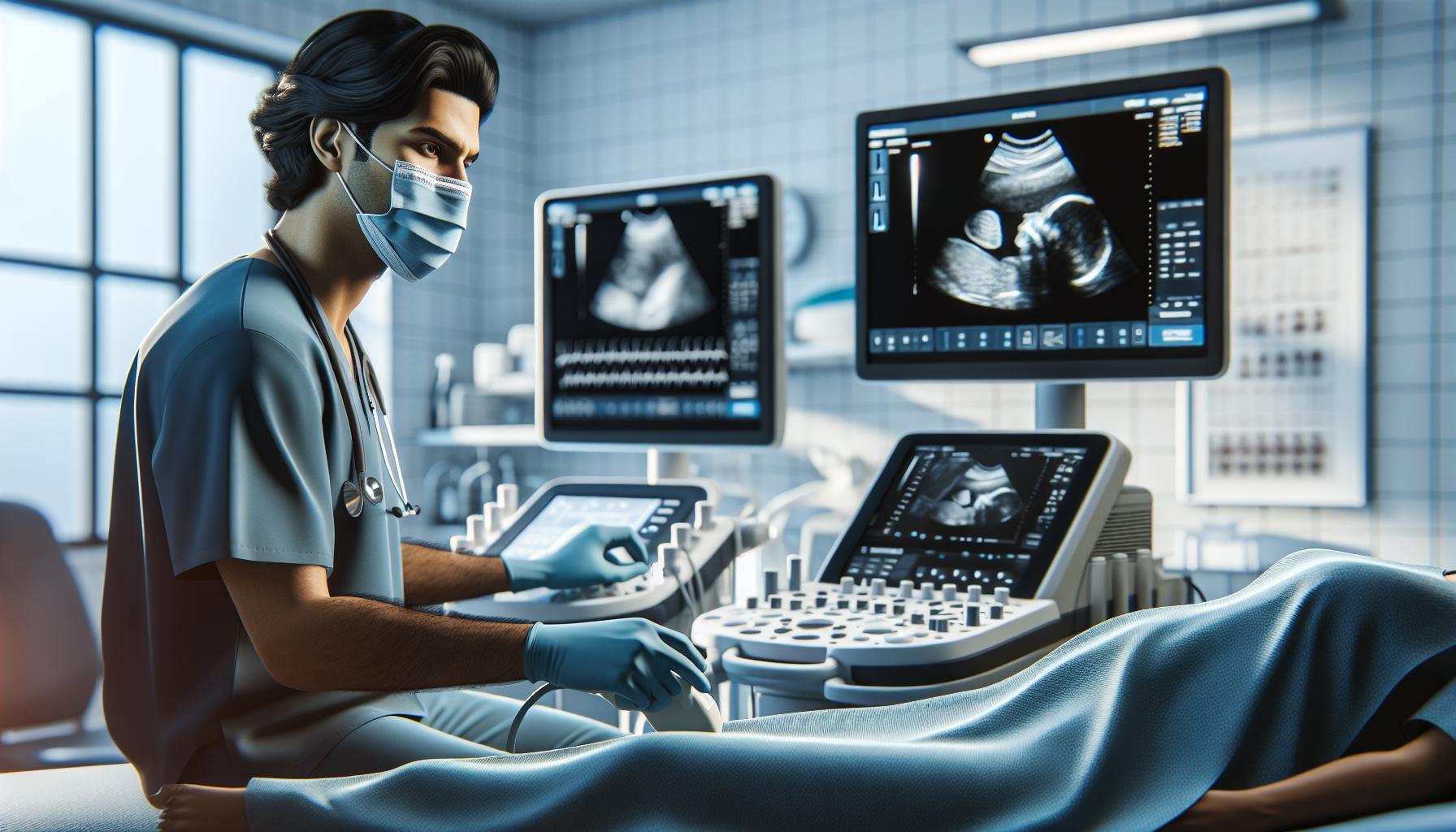Becoming an ultrasound technician offers a rewarding career path in healthcare with strong job prospects and competitive salaries. These skilled professionals play a crucial role in diagnostic medical procedures by creating detailed images of internal organs and tissues using specialized equipment. The journey to becoming an ultrasound tech typically begins with choosing the right educational path. While there’s no single required major, aspiring technicians need to complete specific academic programs that combine classroom learning with hands-on clinical experience. Most employers prefer candidates who’ve earned either an associate’s or bachelor’s degree in diagnostic medical sonography from an accredited institution. Today’s healthcare industry demands well-trained professionals who understand both the technical and patient care aspects of this dynamic field.
What Major Do I Need to Be An Ultrasound Tech
Ultrasound technicians operate specialized equipment to create diagnostic images of patients’ internal structures. These healthcare professionals collaborate with physicians to capture detailed images of organs, blood vessels, tissues, and developing fetuses.
Key Responsibilities
- Prepare patients for ultrasound procedures by explaining the process
- Position equipment to obtain optimal diagnostic images
- Maintain detailed patient records including imaging results
- Identify normal vs abnormal imaging appearances
- Clean and maintain ultrasound equipment
- Follow strict safety protocols for infection control
Required Skills
- Technical proficiency with sonographic equipment
- Strong hand-eye coordination for precise image capture
- Physical stamina for standing long periods
- Clear communication with patients and medical staff
- Problem-solving abilities for equipment troubleshooting
- Attention to detail in image quality assessment
Work Environment
Ultrasound technicians perform their duties in various healthcare settings:
- Hospitals (emergency departments surgical units)
- Medical clinics
- Diagnostic imaging centers
- Private physician offices
- Mobile imaging services
Specialization Areas
Professional ultrasound technicians specialize in specific imaging types:
- Obstetric/Gynecologic sonography
- Cardiac sonography
- Vascular sonography
- Breast sonography
- Musculoskeletal sonography
- Pediatric sonography
- Abdominal sonography
The role demands both technical expertise and interpersonal skills to ensure accurate diagnoses while providing compassionate patient care.
Educational Requirements for Ultrasound Technology

Educational pathways for ultrasound technologists include associate’s degrees bachelor’s degrees from accredited institutions. The Commission on Accreditation of Allied Health Education Programs (CAAHEP) accredits these diagnostic medical sonography programs.
Associate’s Degree Programs
An Associate of Applied Science (AAS) in Diagnostic Medical Sonography takes 18-24 months to complete. The curriculum includes:
- Anatomy coursework covering organ systems structure function
- Medical terminology fundamentals for healthcare communication
- Physics principles specific to ultrasound technology
- Clinical practicum providing hands-on scanning experience
- Patient care protocols for medical settings
- Cross-sectional anatomy imaging techniques
- Advanced imaging techniques for specialized procedures
- Healthcare management administrative skills
- Research methods in diagnostic imaging
- Multiple clinical rotations in diverse settings
- Pathophysiology disease process studies
- Leadership development healthcare ethics
| Degree Type | Duration | Clinical Hours | Career Advancement |
|---|---|---|---|
| Associate’s | 18-24 months | 1,000-1,500 | Entry-level positions |
| Bachelor’s | 4 years | 1,500-2,000 | Management supervision roles |
Key Prerequisites and Coursework
Becoming an ultrasound technician requires specific academic prerequisites, coursework completion, and hands-on training. The educational foundation combines theoretical knowledge with practical experience in diagnostic medical sonography.
Science and Math Requirements
Students pursuing ultrasound technology programs complete foundational science courses for medical imaging proficiency. The essential prerequisites include:
- Biology courses covering human anatomy physiology
- Chemistry fundamentals with lab components
- College-level algebra mathematical concepts
- Physics courses focusing on sound waves properties
- Medical terminology comprehensive understanding
- Computer science basics for equipment operation
Clinical Training Components
Clinical training provides hands-on experience in real healthcare settings under professional supervision. The practical components include:
- 1,000+ hours of supervised clinical practice
- Patient positioning simulation exercises
- Equipment operation practical training
- Image acquisition quality control procedures
- Cross-sectional anatomy scanning techniques
- Safety protocols implementation
- Patient care communication skills
- Documentation medical records management
| Training Component | Required Hours | Setting |
|---|---|---|
| Basic Scanning | 200-300 | Lab Setting |
| Patient Care | 150-200 | Clinical Setting |
| Specialized Procedures | 300-400 | Hospital/Clinic |
| Advanced Techniques | 350-400 | Various Facilities |
Professional Certification and Licensing
 Professional certification acts as a crucial credential for ultrasound technicians, validating their expertise and competency in the field. Registration through recognized organizations enhances career prospects and demonstrates commitment to professional standards.
Professional certification acts as a crucial credential for ultrasound technicians, validating their expertise and competency in the field. Registration through recognized organizations enhances career prospects and demonstrates commitment to professional standards.
ARDMS Certification Process
The American Registry for Diagnostic Medical Sonography (ARDMS) offers specialized certifications through a comprehensive examination process:
- Complete an approved educational program in diagnostic medical sonography
- Pass the Sonography Principles & Instrumentation (SPI) examination
- Choose a specialty examination (Abdomen, Obstetrics/Gynecology, Cardiac)
- Submit documented clinical experience (12 months minimum)
- Maintain certification through 30 continuing medical education credits every 3 years
| ARDMS Exam Component | Time Limit | Number of Questions | Passing Score |
|---|---|---|---|
| SPI Examination | 2 hours | 110 questions | 555/800 |
| Specialty Examinations | 3 hours | 170 questions | 555/800 |
State-Specific Requirements
State licensing requirements for ultrasound technicians vary across the United States:
- California requires certification from ARDMS or ARRT
- New Hampshire mandates state licensure through their Medical Imaging and Radiation Safety Board
- Oregon requires both ARDMS certification and state registration
- New Mexico enforces specific continuing education requirements
- Florida accepts multiple certification pathways including ARDMS CCI or ARRT
- Background checks
- Character references
- Professional liability insurance
- Annual license renewal fees
- Documented continuing education hours
Career Advancement Opportunities
Ultrasound technicians have multiple paths for career growth through advanced certifications, specialization areas and leadership roles.
Advanced Certifications:
- Registered Vascular Technologist (RVT) certification expands expertise in blood vessel imaging
- Registered Diagnostic Cardiac Sonographer (RDCS) focuses on heart imaging
- Advanced practice sonographer roles require additional ARDMS specialty credentials
- Musculoskeletal sonography certification enables sports medicine specialization
Management Positions:
- Lead sonographer supervises department operations
- Clinical coordinator oversees student training programs
- Department manager directs diagnostic imaging services
- Program director at educational institutions
Specialization Areas:
| Specialty | Average Salary | Growth Rate |
|---|---|---|
| Pediatric Sonography | $76,000 | 14% |
| Breast Sonography | $82,000 | 17% |
| Neurosonology | $85,000 | 19% |
| Fetal Echocardiography | $88,000 | 22% |
Educational Advancement:
- Master’s degree in healthcare administration
- Graduate certificates in specialized imaging techniques
- Medical physics programs for equipment specialization
- Teaching positions at sonography schools
Research Opportunities:
- Clinical research projects
- Equipment development with manufacturers
- Publication in medical imaging journals
- Presentation at professional conferences
- Independent contractor services
- Mobile ultrasound businesses
- Telesonography services
- Private imaging centers
Each advancement path requires additional training, certification or experience in specific ultrasound applications.
Becoming an ultrasound technician offers a promising career path in healthcare with strong growth potential and competitive compensation. While there’s no single required major students need to complete an accredited diagnostic medical sonography program that combines classroom learning with hands-on clinical experience. Success in this field requires dedication to ongoing education certification and professional development. With various specialization options and advancement opportunities available qualified ultrasound technicians can build rewarding careers while making significant contributions to patient care and medical diagnostics. Those interested in pursuing this career should focus on developing both technical expertise and patient care skills while staying current with evolving medical imaging technologies and industry standards.



